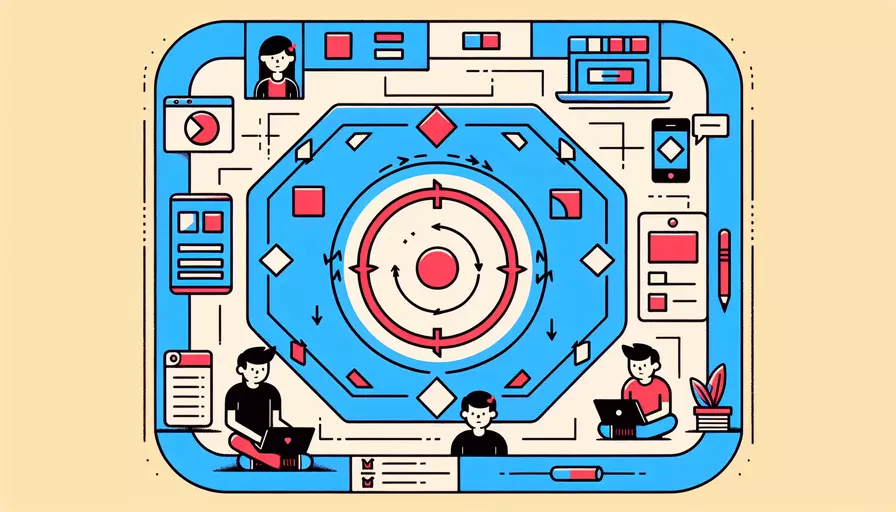
在Vue中将div居中可以通过几种常见的CSS方法来实现。1、使用flexbox,2、使用grid布局,3、使用定位(position)。这些方法能够确保你的div在父容器内水平和垂直居中。下面将详细描述这些方法,并提供代码示例。
一、使用FLEXBOX
Flexbox是目前最流行的布局方式之一,可以非常方便地实现div的居中。以下是具体步骤:
- 确保父容器使用flex布局,设置
display: flex; - 使用
justify-content: center;使子元素在水平方向居中 - 使用
align-items: center;使子元素在垂直方向居中 - 如果需要在整个页面居中,可以将父容器设置为全屏高宽
<template>
<div class="parent">
<div class="child">居中的div</div>
</div>
</template>
<style scoped>
.parent {
display: flex;
justify-content: center;
align-items: center;
height: 100vh; /* 使父容器全屏高 */
}
.child {
width: 200px;
height: 100px;
background-color: lightblue;
}
</style>
二、使用GRID布局
Grid布局是另一种强大的布局方式,特别适用于复杂的布局需求。它同样可以轻松实现元素居中。
- 确保父容器使用grid布局,设置
display: grid; - 使用
place-items: center;使子元素在水平和垂直方向同时居中
<template>
<div class="parent">
<div class="child">居中的div</div>
</div>
</template>
<style scoped>
.parent {
display: grid;
place-items: center;
height: 100vh; /* 使父容器全屏高 */
}
.child {
width: 200px;
height: 100px;
background-color: lightcoral;
}
</style>
三、使用定位(POSITION)
通过绝对定位也可以实现元素居中,这需要在父容器上设置相对定位,并在子元素上设置绝对定位。
- 父容器设置
position: relative; - 子元素设置
position: absolute;并且使用top: 50%;和left: 50%; - 使用
transform: translate(-50%, -50%);将子元素的中心点对齐到父容器的中心点
<template>
<div class="parent">
<div class="child">居中的div</div>
</div>
</template>
<style scoped>
.parent {
position: relative;
height: 100vh; /* 使父容器全屏高 */
}
.child {
position: absolute;
top: 50%;
left: 50%;
transform: translate(-50%, -50%);
width: 200px;
height: 100px;
background-color: lightgreen;
}
</style>
四、CSS表格布局
使用CSS表格布局也可以实现元素居中,虽然这种方法不如Flexbox和Grid灵活,但在某些情况下也非常有效。
- 父容器设置
display: table;和height: 100vh; - 子元素设置
display: table-cell;并且使用vertical-align: middle;和text-align: center;
<template>
<div class="parent">
<div class="child">居中的div</div>
</div>
</template>
<style scoped>
.parent {
display: table;
width: 100%;
height: 100vh; /* 使父容器全屏高 */
}
.child {
display: table-cell;
vertical-align: middle;
text-align: center;
width: 200px;
height: 100px;
background-color: lightyellow;
}
</style>
五、总结与建议
以上介绍了四种将div居中的方法,分别是使用Flexbox、Grid布局、定位(Position)和CSS表格布局。每种方法都有其独特的优势和应用场景:
- Flexbox:适用于大多数居中需求,特别是单行或单列的布局。
- Grid布局:适用于复杂的网格布局,可以同时处理水平和垂直居中。
- 定位:适用于需要绝对控制位置的情况,灵活但需要更多的CSS代码。
- CSS表格布局:适用于简单的居中需求,但在现代布局中不如前两者常用。
根据具体的项目需求选择合适的方法,同时确保代码的可读性和可维护性。如果你是Vue的新手,建议从Flexbox开始学习,因为它是最直观和易于理解的方式。希望这些方法能够帮助你在Vue项目中轻松实现div居中效果。
相关问答FAQs:
1. 如何使用CSS来将div居中?
要将div居中,可以使用CSS的flexbox布局或者使用绝对定位。下面是两种方法的示例:
使用flexbox布局:
<div class="container">
<div class="centered-div">
<!-- div的内容 -->
</div>
</div>
.container {
display: flex;
justify-content: center;
align-items: center;
height: 100vh;
}
.centered-div {
/* div的样式 */
}
使用绝对定位:
<div class="container">
<div class="centered-div">
<!-- div的内容 -->
</div>
</div>
.container {
position: relative;
height: 100vh;
}
.centered-div {
position: absolute;
top: 50%;
left: 50%;
transform: translate(-50%, -50%);
/* div的样式 */
}
2. 在Vue中如何将div居中?
在Vue中,你可以使用上述的CSS方法来将div居中,只需要将CSS样式应用到Vue组件的根元素上即可。下面是一个示例:
<template>
<div class="container">
<div class="centered-div">
<!-- div的内容 -->
</div>
</div>
</template>
<style>
.container {
display: flex;
justify-content: center;
align-items: center;
height: 100vh;
}
.centered-div {
/* div的样式 */
}
</style>
3. 如何在响应式布局中将div居中?
在响应式布局中,你可以使用媒体查询来定义不同屏幕尺寸下的div居中方式。下面是一个示例:
<template>
<div class="container">
<div class="centered-div">
<!-- div的内容 -->
</div>
</div>
</template>
<style>
.container {
display: flex;
justify-content: center;
align-items: center;
height: 100vh;
}
.centered-div {
/* div的样式 */
}
@media (max-width: 768px) {
.container {
flex-direction: column;
}
}
</style>
在上述示例中,当屏幕宽度小于等于768px时,容器的flex方向变为纵向布局,从而实现响应式的居中效果。
文章标题:vue如何将div居中,发布者:不及物动词,转载请注明出处:https://worktile.com/kb/p/3644868

 微信扫一扫
微信扫一扫  支付宝扫一扫
支付宝扫一扫 